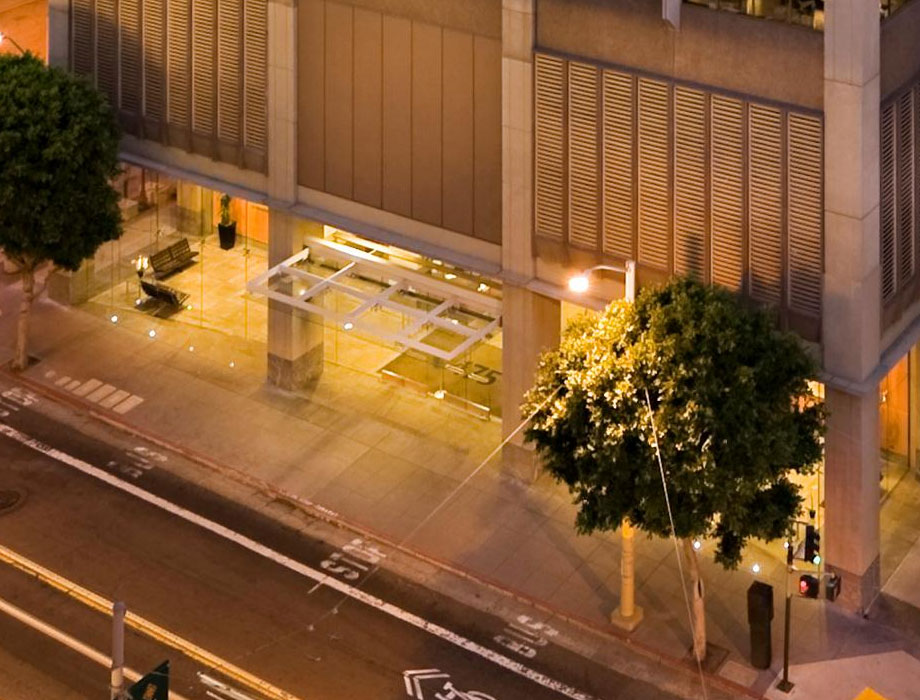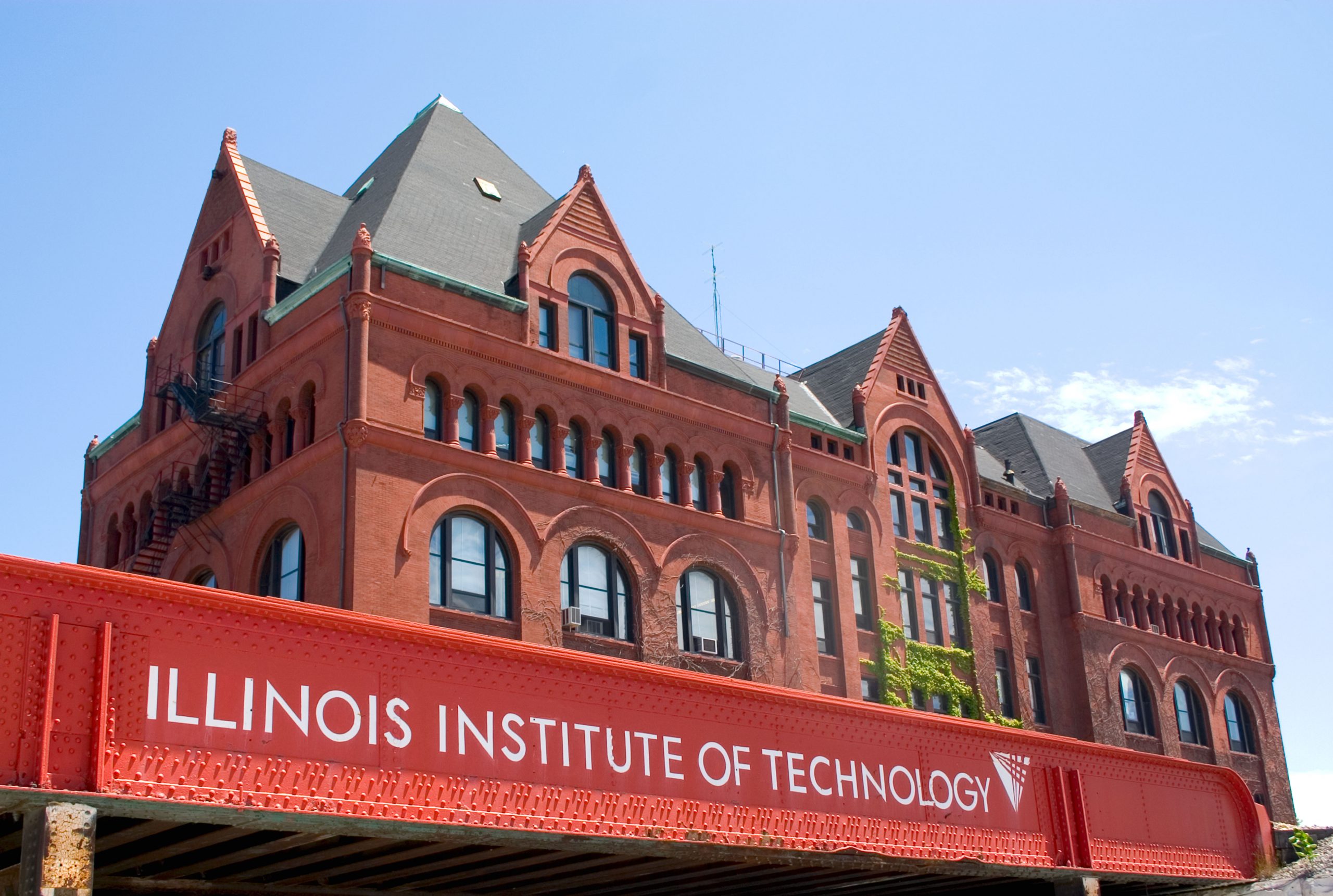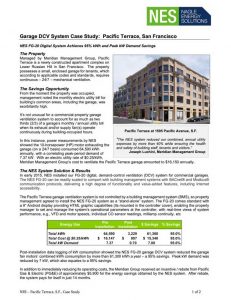Back-to-back Commercial Garage Retrofits Cut Utility Fees by a Combined $37,500
MENLO PARK, CA, March 26, 2015 – NES digital garage ventilation technology continues its exceptional rate of achievement, with the company announcing its FG-20 system achieved a 96.5% reduction in both kilowatt-hour (kWh) consumption and peak kilowatt (kW) demand on back-to-back commercial garage retrofits.
Engineers for the regional utility verified the energy savings captured by the NES garage demand-control ventilation (DCV) system at 475 Sansome Street, a downtown San Francisco, CA high-rise office building, and at CityView Plaza, a high-rise office complex in downtown San Jose, CA. NES recently installed its FG-20 digital control system at the respective properties.
Utility costs for CityView Plaza, which houses a 1,100-vehicle garage with below-grade sections requiring continuous ventilation, have been cut by $29,000 annually – from a pre-retrofit cost of $30,000 per year ($2,500 per month) to ventilate its garage to a post-retrofit cost of $1,000 annually ($83.00 per month).
Prior to retrofit by NES, property management ran its three garage fans totaling 40 horsepower on a 24/7 basis. The resulting 197,000 kWh consumed by the garage ventilation system accounted for 9.3% of Cityview Plaza’s total, annual electric bill.
The NES garage DCV system reduced kWh consumption by more than 190,000 kWh – a 96.5% savings – while maintaining a 24/7 runtime schedule. As a result, the energy consumed by the garage ventilation system now represents just 0.36% of the property’s total, annual energy bill.
Including a $19,000-plus rebate from the regional utility, the NES digital DCV system will pay for itself in just 14.7 months.
At 475 Sansome Street, the NES FG-20 garage solution cut the property’s garage ventilation system kWh consumption by more than 57,580 kWh annually – a 96.5% reduction from its pre-retrofit baseline consumption of 59,700 kWh – with peak kW also permanently reduced by 96.5% (from 15.27 kW to just 0.54 kW). As a result, the utility bill has been reduced by more than $8,500 a year. Based on the energy savings captured by the NES system throughout its 15-year operational lifespan, it will generate a minimum cash inflow of nearly $106,000.
Through several new-construction installations and commercial-property retrofits, the NES garage DCV system has consistently achieved energy savings in the range of 95% – and greater.
The NES system includes its uniquely designed and innovative garage ventilation controller, variable frequency drives (VFDs), NES CO and nitrogen dioxide (NO2) sensors and alarm components, all of which are “synced” to a proprietary, smart-control logic that detects and measures vehicle fumes in the garage and then modulates fan speeds to prevent CO levels (and NO2 levels, where appropriate) from exceeding predetermined set points for extended periods of time. In doing so, the NES system maximizes the energy savings opportunity while enhancing the operational efficiency of the garage ventilation system(s).



